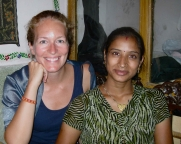SOCIAL PROJECTS
THE SHAMBALA TRADITION, ARTS, POETRY
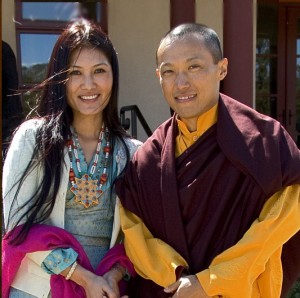
> SHAMBALA IN BUDDHISM, HINDUISM <
> TAI CHI VEREIN SHAMBALA, WIEN <
About The Sakyong, Jamgön Mipham Rinpoche
The Sakyong, Jamgön Mipham Rinpoche, is one of Tibet’s highest and most respected incarnate lamas. The Sakyong—literally, “earth protector”—is king of Shambhala. The first king of Shambhala, Dawa Sangpo, was empowered directly by the Buddha.
The Shambhala tradition emphasizes confidence in the enlightened nature of all beings—windhorse—and teaches courageous rulership based on wisdom and compassion. It holds that these qualities are ultimately more stable than aggression and greed. It shows how to use worldly life as a means to ripen this spiritual potential. It practices turning the mind toward others as a discipline that creates lungta, windhorse, the ability to attain success that occurs from acting virtuously. Sakyong Mipham Rinpoche leads a global community of over 150 meditation centers rooted in these principles.
Sakyong Mipham Rinpoche is unique in that he bridges two worlds. The eldest son of the Vidyadhara Chögyam Trungpa Rinpoche, who was instrumental in bringing Buddhism to the West, he is the incarnation of Mipham the Great, who is revered in Tibet as an emanation of Manjushri, the buddha of wisdom. He descends from the Tibetan warrior-king Gesar of Ling. He also holds the Kagyü and Nyingma lineages of Tibetan Buddhism.

*Calligraphy by Sakyong Mipham Rinpoche. As well as being a meditation master, Sakyong Mipham is a poet and an artist.
Sakyong Mipham Rinpoche is unique in that he bridges two worlds. The eldest son of the Vidyadhara Chögyam Trungpa Rinpoche, who was instrumental in bringing Buddhism to the West, he is the incarnation of Mipham the Great, who is revered in Tibet as an emanation of Manjushri, the buddha of wisdom. He descends from the Tibetan warrior-king Gesar of Ling. He also holds the Kagyü and Nyingma lineages of Tibetan Buddhism.
He is the head of the Shambhala Buddhist lineage and is spiritual director of Shambhala, a borderless kingdom of meditation practitioners committed to realizing enlightenment and social harmony through daily life. He is the lineage holder of Naropa University, which is dedicated to advancing contemplative education.
Sakyong Mipham Rinpoche was born in 1962 in Bodhagaya, India, to Lady Könchok Palden. He spent his early years receiving a Buddhist education, later joining his father in the West, where he continued his study of Buddhist philosophy and ritual. He has studied with the great masters His Holiness Dilgo Khyentse Rinpoche—teacher of the HH Dalai Lama and the king of Bhutan—and HH Penor Rinpoche. He is married to Princess Tseyang Palmo, daughter of His Eminence Namkha Drimed Rabjam Rinpoche, head of the Ripa lineage.
The Sakyong has written two books, the national bestseller Turning the Mind into An Ally, and the prize—winning Ruling Your World. He is a poet and an artist. He has run marathons to raise money for Tibet through the Konchok Foundation.
In September 2006 he offered the first Living Peace Award to HH the Dalai Lama at the Great Stupa of Dharmakaya in Colorado. He travels extensively, teaching throughout the world.
> Meet Sakyong Mipham Rinpoche, friends, studies at facebook <
> Meet Buddhism, friends, studies, Medicine at facebook <
> Meet Bhutan, friends, studies at facebook <
> Meet Tai Chi friends, groups, studies at facebook <
> Meet Qi Gong friends, groups, studies at facebook <
> Meet Calligraphy, arts, friends, groups at facebook <
ANI CHOYING DROLMA – Tibetan Songs

Her actual name is Ani (which means nun or sister) Choying Drolma. Ani Choying Drolma is an exceptional singer, admired by fans all over the world. People are moved to tears by the plaintive purity of her voice, and the haunting melodies of her ancient songs and hymns, passed from master to pupil for many centuries.
Ani Choying has always believed that nuns have a great desire and potential to make the world a better place, if only given equal opportunities. In 2000 she opened the Arya Tara School. The school aims to equip nuns to help and to serve their communities in a professional and humanitarian capacity. With a fully developed and realized potential, she believes that her nuns will be able to not only help themselves, but also to help others.
In brief, Arya Tara School aims to help young nuns bring their compassion into fruition, actively, effectively, skillfully and meaningfully. Traditionally, says Ani Choying, women’s education is neglected in Asia. “most of the girls at my nunnery are from rural areas either in Tibet, India or Nepal, patriarchal cultures where women are expected just to cook, clean and bear children. Even in the nunnery, they are taught to read classical Tibetan in order to do the religious practice, but many cannot write their own names.”
Her school would educate them in Literacy, Maths, Science, Medical and Nursing skills, and Buddhist philosophy.
TIBETAN MEDICINE – Tibetan massage

> TRADITIONAL TIBETAN MEDICINE <
Tibetan medicine is a centuries-old traditional medical system that employs a complex approach to diagnosis, incorporating techniques such as pulse analysis and urinalysis, and utilizes behavior and dietary modification, medicines composed of natural materials (e.g., herbs and minerals) and physical therapies (e.g. Tibetan acupuncture, moxabustion, etc.) to treat illness.
The Tibetan medical system is based upon a synthesis of the Indian (Ayurveda), Persian (Unani), Greek, indigenous Tibetan, and Chinese medical systems, and it continues to be practiced in Tibet, India, Nepal, Bhutan, Ladakh, Siberia, China and Mongolia, as well as more recently in parts of Europe and North America. It embraces the traditional Buddhist belief that all illness ultimately results from the „three poisons“ of the mind: ignorance, attachment and aversion. Read more: > HERE <
What is Tibetan Medicine
Tibetan Medicine (TM), one of the world’s oldest healing traditions, has been practiced for more than four thousand years in Tibet and the Himalayan region. TM, called „Sowa Rigpa“ in Tibetan, means the knowledge and science of healing. „Sowa“ means to heal the imbalanced and „Rigpa“ means the knowledge or science of a particular subject. Along with five treatises of Buddhist Doctrine such as technology, medicine (Sowa Rigpa), studying of sounds, logic, and philosophy, Sowa Rigpa is regarded as one of the most important sciences in Tibet.
The Fundamental Principle Of Tibetan Medicine
The fundamental principle of Tibetan medicine is that the body, the disease, and treatment, all share common principles and are comprised of the five elements, earth, fire, water, air, and space. This approach recognizes that every thing in the universe – plants, animals, and human beings including all our body tissues, internal organs, skin, skeletal system and even emotions, are composed of these five elements. Each one of them plays a major role, both individually and in combination as aspects of all matter. The five elements maintain reciprocal relationships. When they stay in balance, it results in a healthy body, speech, and mind. However, if any one of these elements becomes out of balance, either excess, deficient, or disturbed, not only does the affected element manifest disharmony, but also it will cause the rest of the elements to lose their balance and manifest particular syndromes or symptoms. Since each individual disease is caused by disharmony or disturbances in one of the five elements, the treatment principle is to balance the elements through diet according to an individual’s constitution and behavior, utilize herbs, and other accessory therapies such as blood letting, Mey-Tzar (Tibetan moxa ), external therapy (heat or cold), natural or medicinal bath, enema, and Ku Nye ( Tibetan Massage ).
About the Shang Shung Institute
The Shang Shung Institute (SSI) is an international organization that seeks to broaden the world’s understanding of traditional Tibetan culture. At this moment in history the preservation of this rich and beautiful culture is of utmost importance as it is in real danger of being lost. As such, the SSI promotes programs and initiatives that support the continuation and survival of this rich cultural heritage.
The SSI was founded in Italy in 1989 by Chögyal Namkhai Norbu, a renowned scholar of Tibetan culture, as well as one of the foremost living Dzogchen Masters. Other branches of the SSI have since been established in North America, Austria, Russia, and Argentina.
The SSI develops and maintains projects in various countries including: the translation, publication, and archiving of Tibetan texts; the organization and presentation of international cultural and educational events to share and preserve Tibetan heritage; and formal courses of study that train students in ancient Tibetan arts and sciences, including art, language, and traditional Tibetan medicine.
The Institute is active in four main areas of interest:
- Archives and multimedia
- Culture and events
- Traditional Tibetan medicine
- Tibetan language study and research
> Meet the Book of Tibetan Medicine in facebook <
GREEN YOGA (T.Y.S.) WITH FEUERSTEIN´s

> First People Arts, Projects <
> TRADITIONAL YOGA STUDIES (TYS)<
Dr. Georg Feuerstein (born 1947) is a German-Canadian Indologist specializing on Yoga. Feuerstein has authored over 30 books on mysticism, Yoga, Tantra, and Hinduism. He has translated, among other traditional texts, the Yoga Sutras of Patanjali and the Bhagavad Gita. Feuerstein moved to England to do his postgraduate research at Durham University and subsequently lived for 23 years in the United States. Today, he is a resident of Canada and lives in Saskatchewan. Read more: > Here <
Any student of Yoga will want to know more about not only the practices of Yoga but also its history and spirituality. One of the best places to turn is to Georg Feuerstein’s acclaimed Shambhala Encyclopedia of Yoga. With more than 100 illustrations (such as the many asana postures and chakra centers) and entries on everything from the Bhagavad Gita to Swami Vivekananda and from the Aryan invasion theory to biofeedback, you can’t go wrong.
Extensive cross-references also facilitate searches for both English and Sanskrit versions of terms. The Shambhala Encyclopedia is a complete yet concise guide to the galaxy of Yoga. Any student of Yoga will want to know more about not only the practices of Yoga but also its history and spirituality. One of the best places to turn is to Georg Feuerstein’s acclaimed Shambhala Encyclopedia of Yoga. With more than 100 illustrations (such as the many asana postures and chakra centers) and entries on everything from the Bhagavad Gita to Swami Vivekananda and from the Aryan invasion theory to biofeedback, you can’t go wrong. Extensive cross-references also facilitate searches for both English and Sanskrit versions of terms. The Shambhala Encyclopedia is a complete yet concise guide to the galaxy of Yoga. ´
The Shambhala Encyclopedia‘ is a must for anyone interested in this complex and lively tradition, and will be a valuable reference by which to gauge the ongoing invention of American yoga. (Beliefnet, May 2000)
> Meet Native American Friends, Studies, Groups at facebook <
> Meet GOPIO – Global Organization of People of Indian Origin <
> Meet IYENGAR (B.K.S.), Yoga, Friends, Studies, Groups at fb<
> Meet Swami Vivekananda, Yoga, Studies, Friends, Groups at fb<
> Meet Bhagavad Gita, Yoga, Studies, Friends, Groups at fb <
> Meet TYS Traditional Yoga Studies Feuerstein at fb <
> Meet Feuerstein´s TYS Green Yoga, Friends, Studies, at fb <
SRI RAMANA MAHARSHI, HERBAL MEDICINE
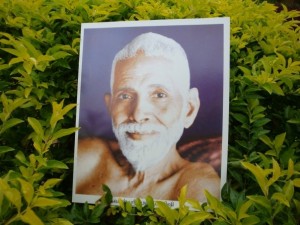
> DOWNLOADS, BIOGRAPHY, MEDICINAL RECIPES <
> DR. V. MANICKAM – SRI RAMANA HERBS <
Sri Ramana Maharshi (Tamil: ரமண மஹரிஷி) (December 30, 1879 – April 14, 1950), born Venkataraman Iyer, was an Indian sage. He was born to a Tamil-speaking Brahmin family in Tiruchuzhi, Tamil Nadu. After having attained liberation at the age of 16, he left home for Arunachala, a mountain considered sacred by Hindus, at Tiruvannamalai, and lived there for the rest of his life. Arunachala is located in Tamil Nadu, South India. Although born a Brahmin, after having attained moksha he declared himself an „Atiasrami“, a Sastraic state of unattachment to anything in life and beyond all caste restrictions.
Sri Ramana maintained that the purest form of his teachings was the powerful silence which radiated from his presence and quieted the minds of those attuned to it. He gave verbal teachings only for the benefit of those who could not understand his silence. His verbal teachings were said to flow from his direct experience of Consciousness as the only existing reality. When asked for advice, he recommended self-enquiry as the fastest path to moksha. Though his primary teaching is associated with Non-dualism, Advaita Vedanta, and Jnana yoga, he recommended Bhakti to those he saw were fit for it, and gave his approval to a variety of paths and practices. Read more: > Here <
Bhagavan Ramana and Herbal Medicine
By Dr Manikkam
The essence of all beings is earth. The essence of earth is water. The essence of water is the herb. The essence of the herb is the human being. So says a maxim of the Chandogya Upanishad.
The health traditions of India extend to thousands of years. It perhaps started with the cave man who consumed roots, leaves and herbs raw before discovering fire and subsequently the means of cooking. In this, however, man was only imitating the animals which consumed plants to alleviate health disorders. Nature has provided animals with hindsight that helps them recognise symptoms of bodily disorders, the means of selfdiagnosis and self-medication. The monkey provides one of the most common and best examples. To this, we shall revert later. In India, before codified medicinal systems like Ayurveda and Siddha took roots, folk curative traditions based on observation and experimentation were developed and nurtured.
This tradition had its variants in accordance with climate, terrain and habits; but the essence was the same. The plant kingdom was considered the saviour. General health disorders were treated by a combination of various plants and herbs. Each and every part of a plant was useful root, bark, stem, leaf, flower, fruit and seed. Methods were developed to extract the maximum benefits from each of the parts of a plant. This glorious tradition which was the forerunner to Siddha and Ayurveda, was passed through word of mouth to successive generations. The grandmother in the house was the main custodian of this oral tradition. Proverbs were created and repeated any number of times by the elders in the family to emphasise the importance of healthy living, both physical as well as mental. These proverbs have stood the test of time and they remain intact to guide us. The properties and benefits of herbs and plants were enshrined in easy to understand language.
All Indian languages had their own variants of these health proverbs. The most important feature of the ancient Indian systems of medicine is to look at the human being as a whole entity. The physiological part of it was not divorced from the psychological and the psychical. The body, mind and soul were not treated separately, but as constituting a wholesome single entity. Ancient puranic tradition has it that this system was practised by the rishis, siddhas and devas, the celestial beings. The siddhas were seekers after God. It was they who scientifically developed and nurtured various disciplines such as yoga, medicine, linguistics and other allied arts and sciences.
FULL TEXT ABOUT HERBAL SYSTEM, MEDICINE, RECIPE´s and more: > HERE <
Dr. Manickam and his family are very humble devotees of Bhagavan. His tradition is ‚Herbal Medicine‘, which combines Herbal remedies with the Ayurvedic and Siddha systems of medicine using modern diagnostic techniques. He uses and researches some of the medicinal recipes created by Bhagavan Sri Ramana Maharshi, plus those of his father and grandfather.
All of Bhagavan’s recipes replace the more traditional Ayurvedic ones with pure herbal formulae, which have been found by doctor Manickam to have many times the potency and effectiveness of the traditional recipes. They also have no known side-effects.
All of Bhagavan’s recipes use herbs found on and around Arunachala, this of course adds priceless value to those recipes.
Anyone suffering from ailments and not happy with Western treatments can contact Dr. Manickam at the address and telephone number below …..
Dr. V. Manickam
Sri Ramana Herbs
54-c Mathalangula Street
Tiruvannamalai – 606 601
Tamil Nadu
South India
-
Telephone: (0091) 4175 251937 – NEW Telephone number
- Email – Dr Manickam <drmanickam_tvm@sify.com> – NEW E-mail address.
-
Dr. Manickam is a registered practitioner … Reg. No. 10327 (H)
Tiruvannamalai Charities Supported by This Site:
The three charities listed below have been thoroughly checked by myself and all are genuine.
Ramana Maharshi Rangammal Memorial Hospital and School – 1.4 Mb
Shanthimalai Research & Development Trust – 1.0 Mb
Sanmarga Dayasramam Trust – 1.4 Mb
> Meet Ramana Maharshi Groups, Friends, Studies, Fans at facebook <
> Meet Sri Ramana Seva Ashram,Rachapalli at facebook <
> Meet Herbals & Naturals at facebook <
> Meet Arsha Vidya Gurukulam, Studies, Friends, Fans, at fb <
> Meet Advaita Vedanta,Groups,Friends,Studies, Vivekananda at fb <
WATER PROJECT „SATRASAYA“ IN NEPAL
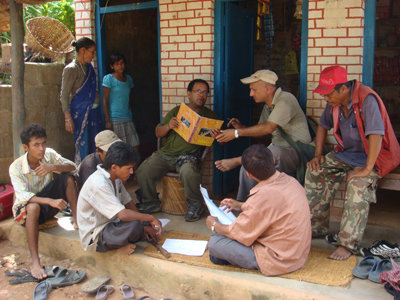
WATER SOCIAL PROJECT
this the village where the sri sathya sai central council of nepal is going to do one water project for the villagers of about 45 houses there and we have done the survey for the cost estimation and possibility to bring down the water from the source of water which is very far from teh village about 3 kilometers and the programme will be in hand of the sai youths of nepal.
the youths wil do all the necessary activities like digging cuting pipes and other necessary activities to make water projects. so now its the initial phase and we are making costs and colecting some funds. any one who are interested for the donation can contact me which wil be great service for the villagers. sairam
Location: satrasaya vdc tanahu district little behind from pokhara
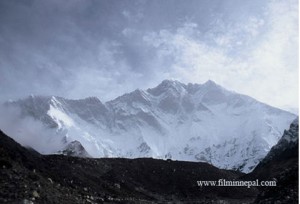
www.filminnepal.com www.icefallproductions.com
FILMPROJECT NEPAL
Film in Nepal is an effort to promote Nepal as a filming destination in the world. We are a group of professionals who have worked and assisted so many international film projects from different countries for filming in Nepal. We created this idea to expose Nepal as a filming location for features, commercials and documentaries. We not only organize international filming teams in Nepal but also produce movies in Nepal film Industry. Film Development Board of Nepal and Nepal Tourism Board are our strategic partners for promoting Nepal as a filming destination.
Since then, we have been assisting so many production companies from different countries and international broadcasters like National Geographic, discovery Channel, BBC, Channel4, Channel5, Universal Pictures, etc….
Nepal offers the most spectacular locations for filming. Jungle, rivers, fields, ancient buildings, historical locations and the majestic mountains, including Mt. Everest are all the possible sites for filming in Nepal. Besides those natural outdoor location, Nepal also has some indoor studios to meet your requirements for indoor shooting.
You can contact us for any kind of assistance for filming in Nepal. We are always ready to support you to make your shoot possible. We help you find the stories, suitable characters and location that you are looking for and try to make the whole shoot run smoothly and make it successful in the best possible way. We also will get all necessary filming permits, do the customs clearance for the filming equipments that you are bringing, arrange professional human resources and help you complete your shoot professionally and within budget.
> Meet Nepal friends, studies, groups at facebook <
> Meet Work together Nepal at facebook <
> Meet Climate Change Group at facebook <
> Meet Hari Krishna Pokharel, Water Project, Filmproject at fb <
TIBETAN PHOTO PROJECT
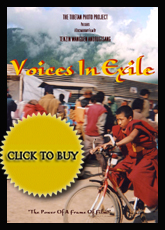
Tibet is a plateau region in Asia and disputed territory, north of the Himalayas. It is home to the indigenous Tibetan people, and to some other ethnic groups such as Monpas and Lhobas, and is now also inhabited by considerable numbers of Han Chinese people. Tibet is the highest region on earth, with an average elevation of 4,900 metres (16,000 ft). It is sometimes referred to as the roof of the world.
Mission Statement
Recognizing that there is much that we can learn from the Tibetans:
The goal of The Tibetan Photo Project is to provide the tools and technical education in photography to create a voice from the films and photos by Tibetans.
While there have been thousands of great visual works documenting the Tibetans, most have been from the perspective of the Western eye.
The Tibetan Photo Project is working to present the Tibetans‘ own perspective through the Website, exhibits, films, DVDs and other visual programs created from their own photographic work or by film and photo efforts directed by Tibetans.
BLUE HEART CAMPAIGN
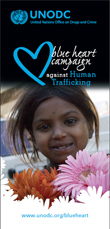
UNODC , efforts to implement the Protocol to Prevent, Suppress and Punish Trafficking in Persons (Trafficking in Persons Protocol). as guardian of the United Nations Convention against Transnational Organized Crime (UNTOC) and the Protocols there to, assists States in their
UNODC has launched a campaign against human trafficking. Called the Blue Heart Campaign, this initiative aims at raising awareness of the problem and inspire those with decision-making power to effect change.
Learn more today and help us work to stop human trafficking in the future.
What is the Blue Heart Campaign ?
-
An awareness raising initiative to fight human trafficking and its impact on society.
-
The Blue Heart Campaign seeks to encourage involvement and inspire action to help stop this crime.
-
The campaign also allows people to show solidarity with the victims of human trafficking by wearing the Blue Heart.
Ali Akhbar College of Music, LAYA Project


>> A.A.C.M. Ali Akbhar College of Music <<
The mission of the Ali Akbar College of Music is to teach, perform and preserve the classical music of North India, specifically the Seni Baba Allauddin Gharana (tradition), and to offer this great musical legacy to all who wish to learn.
The Ali Akbar College of Music offers education in the classical music of North India at the highest professional level. Our primary instructors are the internationally recognized sarode Maestro Ali Akbar Khan and the master of percussion Pandit Swapan Chaudhuri, from whom our students learn the necessary musical skills, knowledge and understanding to contribute significantly to musical life. Our international student body ranges from beginner to accomplished professional. Facilities include several practice rooms, classrooms and a concert hall.
Students learn to play the classical music of North India on the instrument of their choice, Indian or non-Indian. All are encouraged to learn vocal music. Cross training in raga (melody) and tala (percussion) are encouraged, though typically the student will specialize in either raga or tala.
Residential facilities are not available at the College at this time, but housing is available in the area. Please contact the College office for information on finding comfortable, music friendly lodging near the College.
The school is located about 10 miles north of San Francisco in beautiful San Rafael and is easily accessible by car or public transportation. For detailed map and directions click here.
THE LAYA PROJECT:
A tribute to the resilience of the human spirit, LAYA PROJECT is a documentary about the lives and music culture of coastal and surrounding communities inthe 2004 tsunami-affected regions. Some of these performances are rare, and documented for the first time.
> Meet Ustad Ali Akbhar Khan, Friends, Fans at facebook <
VISVA-BHARATI UNIVERSITY, TRUST
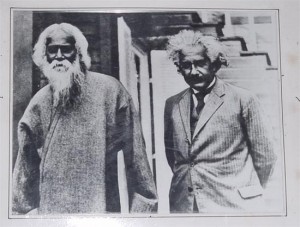
RABINDRANATH TAGORE – YOGAH,SCIENCE POETRY
INT. CONFERENCE ON GLOBAL CLIMATE CHANGE
Visva Bharati University, Santiniketan (বিশ্বভারতী বিশ্ববিদ্যালয়) is a Central University for research and teaching in India, located in the twin town of Santiniketan and Sriniketan Indian state of West Bengal. It was founded by Rabindranath Tagore who called it Visva Bharati, which means the communion of the world with India. In its initial years Tagore expressed his dissatisfaction with the word ‚university‘, since university translates to Vishva-Vidyalaya, which is smaller in scope than Visva Bharati. Until independence it was a college. Soon after independence, in 1951 the institution was given the status of a university, and was renamed Visva Bharati University.
The origins of the university date back to 1863 when Maharshi Debendranath Tagore, himself the zamindar of Silaidaha in East Bengal, bought a tract of land from the zamindar of Raipur, which was a neighbouring village not too far from present day Santiniketan and set up an ashram at the spot that has now come to be called chatim tala at the heart of the town. The ashram was initially called Brahmacharya Ashram, which was later renamed Brahmacharya Vidyalaya. It was established with a view to encourage people from all walks of life to come to the spot and meditate. In 1901 his youngest son Rabindranath Tagore established a co-educational school inside the premises of the ashram. Read More > here <
VISHWABHARATI TRUST:
Project Description
The > Vishwabharati Trust < is located at Anavatti, a rural area belonging to Karnataka,India. The place is about 500 kms from Bangalore, well connected by road, amidst beautiful Malnad greenary.
The Vishwabharati Trust was started on 6 th October, 1997 to provide education to poor and physically handicapped children. The trust is presently running a school and 140 deserving children are now studying.
The main objectives of the Vishwabharati Trust are as follows:
1. To make the children self dependent.
2. To make the children aware of our rich culture and heritage.
3. To develop fine and strong character.
4. To develop the children in sports and extra curricular activities
Organization Description
Objectives:
To establish and maintain educational institutions from pre-primary to post graduation level, including professional, technical, vocational and training institutes of any kind and moral training for the benefit of the public in rural community particularly.
> Meet Rabindranath Tagore Fans at facebook <
> Meet handwritten Letter In Sweet Memory of Tagore at facebook <
> Meet STOP GLOBAL WARMING GROUPS AND STUDIES at facebook <
> Meet Vishva-Bharati Public School at facebook <
TSAMPA, HIMALAYAN CHILDREN, CEREALS

EATING TSAMPA
*Green barley is recognized by science as being the most nutritious of all plant foods, containing a broad spectrum of essential vitamins, minerals and amino acids in high concentrations. In its natural state it also contains important enzymes such as the antioxidant ’superoxide dismutase‘. With this pure food, nature has given us the perfect combination of nutrients. Since I was introduced to green barley I have experienced a whole new level of energy! , (Anm.: Barley is wellknown in Ayurveda aswell…)
Tsampa (Tibetan: རྩམ་པ་; Wylie: rtsam pa) is a Tibetan staple foodstuff, particularly prominent in the central part of the country. It is roasted flour, usually barley flour (Tibetan: ནས་རྩམ་; Wylie: nas rtsam) and sometimes also wheat flour (Tibetan: གྲོ་རྩམ་; Wylie: gro rtsam) or rice flour (Tibetan: འབྲས་རྩམ་; Wylie: bras rtsam). It is usually mixed with the salty Tibetan butter tea (Tibetan: བོད་ཇ་; Wylie: bod cha).
Tsampa is the staple food of Tibetans and often called as the National food of Tibet. It is the end result of organic roasted barley ground into fine and coarse flour. > Tsampa < is a very simple and easy to prepare food widely known as convenience food used at home and also by the travelers in Tibet. It is easy to carry and easy to prepare. Travelers in Tibet always have a pouch of Tsampa tugged to their luggage for an easy and readily available meal.Tsampa mixed with yak butter, dried powdered cheese and tea makes for a refreshing and energetic food. Sportsmen in Tibet consider Tsampa as an energy booster minus the harmful chemicals. Ground roasted barley is easily digestible and is readily absorbable by the body.
Apart form that Tibetans traditionally use Tsampa for various religious rituals and offering purposes.We offer two different kinds of Tsampa for your eating pleasure. Regular Tsampa and Amdo Tsampa. Regular Tsampa is very fine and smooth when made into a cereal. Amdo Tsampa, which is a little coarser, is our specialty item. It has a hearty nutty flavor. Both Tsampa types are heart healthy and energy rich food choices, pure and tasty. We are just a click or a phone call away if you wish to enjoy this wholesome yet healthy Tibetan food.
http://www.abtei-st-hildegard.de
Meet TIBETAN TSAMPA Group and Friends at fb
BOCK AUF KULTUR
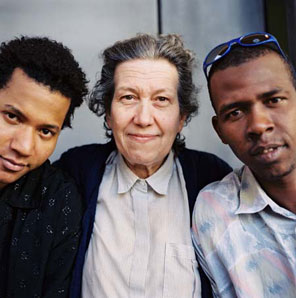
Ute Bock – Austria
Ute Bock worked professionally for many years as a social worker and educator/teacher, before she became director of the Zohmanngasse Home in Vienna in 1976.. In the early 1990s, she started to take care of teenage immigrants. She also took in underage refugees from countries at war, who came to Austria on their own looking for asylum. Ute Bock was the last hope for many teenage immigrants for whom nobody else cared. Her small project has grown into a community of 50 apartments where over 200 people find a home. She has also provided a legal address and legal aid for more than 1000 immigrants so that they can pursue their asylum procedures.
She was born in Linz, Austria in 1942.
In the early 1990s, Ute Bock started to take care of teenage immigrants, who were sent to her by the youth welfare office. At first, they were mostly children of immigrant workers. But soon enough she also took in underage immigrants from countries at war, who came to Austria on their own looking for asylum. Zohmanngasse and Ute Bock were the last hope for many teenage immigrants for whom nobody else cared.
Any time a social or immigrant worker was at a loss, the teenagers were sent to Ute. At Zohmanngasse no youth was turned down, no matter where he or she came from. And when she ran out of space, Ute Bock organized and financed flat-sharing apartments for communal living.
During a police raid in September 1999 at her home, 30 youngsters and young adults from Africa were arrested on grounds of suspected drug dealing. Ute Bock was accused of dealing with drugs and supporting gangs. She was briefly suspended from her job. While the indictment and suspension were lifted, Ute Bock was not allowed to shelter African immigrants at her home any longer.
Ute Bock has won numerous awards for her social commitment. She was given the United Nations Refugee Agency (UNHCR) Refugee Award in 2000, the Bruno Kreisky Award for Human Rights in 2002, the Dr. Karl Renner Award in 2003, the Humanity Award by the Red Cross and the Spin the Globe Award from Siemens Austria in 2004.
Ute Bock retired in August 2000 and since then she has been working full time taking care of African immigrants, who like to call her ‘Mama Africa’. Her original small project has grown into a community of 50 apartments, where over 200 people find a home. Apart from this, she has provided a legal address and legal aid for more than a thousand immigrants, so that they can pursue their asylum procedures.
Ute Bock has been financing her project with her own pension, her savings, financial awards and donations.
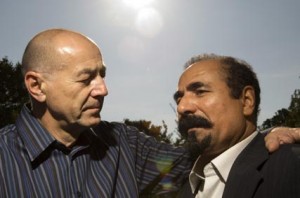
> VEREIN KETANI < > VEREIN ROMA <
WILLI RESETARITS, Founder of Integrationshaus
Wilhelm Resetarits (born 21 December 1948 in Stinatz, Austria), better known as > Willi Resetarits < and Dr. Kurt Ostbahn, is an Austrian singer, comedian and human rights activist.
Resetarits was born in the Austrian state Burgenland, but his family moved to Vienna when he was three. He studied sports and English studies intending to become a teacher, but his successful career as a musician intervened.
Resetarits is a human rights activist and one of the founders of the humanitarian organisations Asyl in Not and SOS Mitmensch. He is also one of the founders and chairman of the Integration House Vienna.
He has made frequent appearances on Austrian TV and in film productions.
Lukas Resetarits (cabaret artist and actor on TV) and Peter Resetarits (TV host at ORF) are his brothers. Karin Resetarits, a present member of the European Parliament, is his divorced sister-in-law.
> Meet Ute Bock, Bock auf Kultur, Friends at facebook <
> Meet Gitans, Gitanos, Gipsys, Zingari, Roma, Sintis …Friends at fb <
ANBU – Helping Children in Need
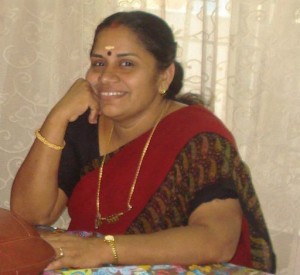
POEMS FROM MRS. SANTHI KRISHNAN
The director/conductor of the Organistation Raghavan, is in Arunachalapuram in south India, Tamilnadu and in the environment on the way and tried, so many humans, those by emergency, divorce, separation, accident or other one to help. He partly gets references from the population, which is guessed/advised humans in emergency. Then it intervenes: Anbu Trust is a legal organization. Raghavan, must deliver each year a report to the state and let its finances examine. What at donations by sponsorships, sponsors and other funds with it arrive, also really go to humans, who need it urgently. It supports much humans and children.
This is the FCRA, which one needs in India, in order to make a Non Profit Organization official, these places we gladly for the order, as a check.
Here at Anbu Trust we search for anyone who is willing to help with small monthly donations which is used in emergency situation. We are not looking for a great sum of money, but only which you can afford to give.
Only you can determine how much you can afford to give, every dollar, rupee, Euro, paso, what ever it is that you can give, counts and gives hope and the the dawn of another day for those in need. IT provides for many another day of food or medicine in which they would not recieve without our help. Each of us all over the world, whether in Germany, America, Russia, India, China or anywhere in the world, can be stricken by illness, unemployment or any emergency situation. We ask that if you can, to please help us and God by helping his children in need. Many of our friends in Bollywood have accepted a sponsorship or have given a donation. Some donate or help with clothes, shoes, toys or school supplies. They also give us ideas on how we can help more. For all we are grateful!
In several Bollywood forums, we have made wonderful friends, who help Raghavan and those in need in Tamilnadu.
Since the tsunami hit this area, it brought death an destruction and sickeness and hunger to many, only we can help them to recover and get a sense of life back to their existance. We adjust here on this web page everything, so that all everywhere can see what we work so hard to accomplish. All that you donate you will be able to see and that it is going to where it is intended to be. Our team works in vain, and we want no payment, or take money for any thing that is needed. We give everything from private funds. The cost of packages that are sent are privately paid for by the person sending them. We dispatch all the gifts to the children at our own expense also, so only the complete amount of donations go to the children and families in need.
You will be able to see where your donations are going and how they are helping those in need. You may also get picutes and from time to time and maybe a letter from those you are sponsoring. Any question you ever have will always be answered to the best of our ability and someone will always be available. We take great pride in helping those who need us and we get back so much just by seeing a smile.
Meet ANBU Trust – helping children in need at facebook <
Meet Bollywood Groups, Friends at facebook <
THE GERE FOUNDATION

As a small grant giving organization, the Gere Foundation awards grants to groups that are dedicated to the cultural preservation of Tibet and the Tibetan people; dedicated to providing HIV/AIDS care, research and treatment and to those organizations addressing human rights violations throughout the world.
The Gere Foundation contributes directly to The Tibet Fund, supporting His Holiness the Dalai Lama and the Tibetan community-in-exile.
NEWS ABOUT QUEENS CAFE IN UDAIPUR!
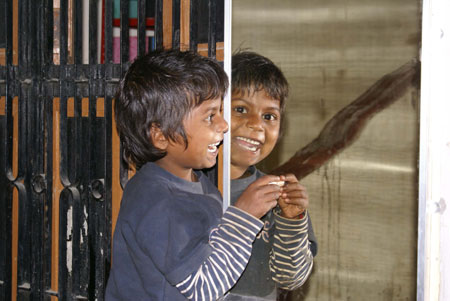
> BACK TO LIFE e. V. in Germany <
Anyone visiting Udaipur who has a desire to learn the traditional vegetarian Indian menu from A-Z should be required to visit Meenu at the Queen Cafe in Udaipur. Her cooking classes, held in her parents tiny restaurant kitchen (which is approximately 6′ by 6′) are what she herself describes as “principle classes”. Instead of learning to make a set 4 or 5 dishes, she shows you every masala, curry, bread, rice, and vegetable combination that you can possibly imagine – and on top of it throws in a few of her personal inventive recipe combinations. She has the corner on the market for these type of classes and so is fiercely protective of her IP. You better bring your best short-hand – you can write as many hand-written notes as you can manage between trying the 50 dishes that come flying at you…..
Cindy and Meenu – our fantastic teacher!
!DER Geheimtip! – in Nordindien….
…..By the end of the day we felt like we had found a home away from home. We had dinner at their one small community restaurant table – the best pumpkin curry in all of Rajastan!
We met her kids, helped her write some email, and learned about the struggles of a business-savvy Indian woman trying to balance family life and a career of her own. She is on her way to opening Meenu’s Restaurant in July of this year, with a larger space for bigger cooking classes.
We did take a short break to take in the cultural show at Bagore ki Haveli – which for a mere 60 rupees got a double two-thumbs up for the fantastic (and not called-in) performers and the price.
If you are ever in Udaipur it would be a sin to miss the cultural show, but especially to miss a stop at Queen Cafe. Oh, and get as many of Meenu’s special chocolate balls as you can carry. They don’t melt in 100 degree temperatures and rival any Belgian chocolate truffle you’ve ever tasted!
Travellers can rent a room in the family’s apartment above Queen’s Cafe a tiny little restaurant run by Meenu and her parents. You can spent all of Friday morning in the kitchen getting an Indian cooking lesson, and eat the results.
>Mehr über Meenu, Kategorie Sozialprojekte<

Spenden in Hinblick der Bewahrung traditioneller vegetarischer, vedischer Küche, bzw. der Planung Meenus Restaurants in Rajastan über Kontaktaufnahme bei www.back-to-life.com
Koch-Schüler, Wanderer & Reisende jederzeit bei Meenu herzlich willkommen!
Übernachtungsgäste können mit Meenus Sohn ganz in der Nähe auf dem See Boot fahren!
> Meet Ayurveda Groups, friends, Studies, Cooking… at facebook <
